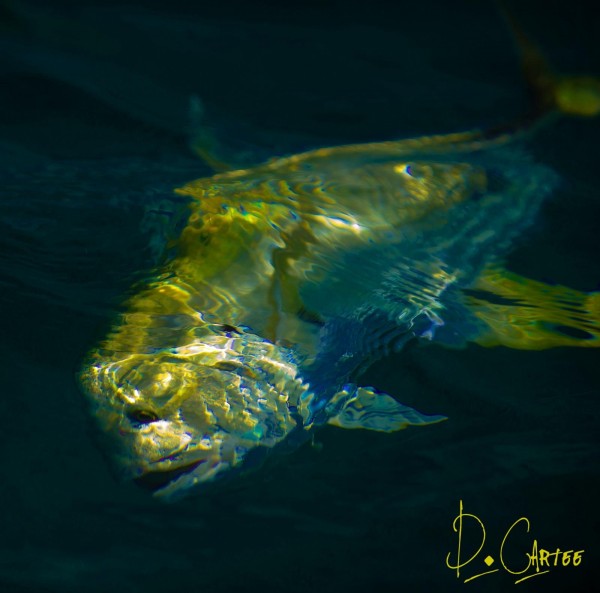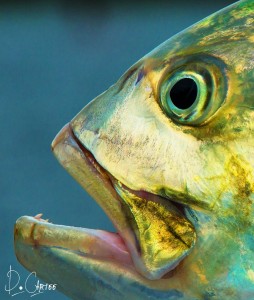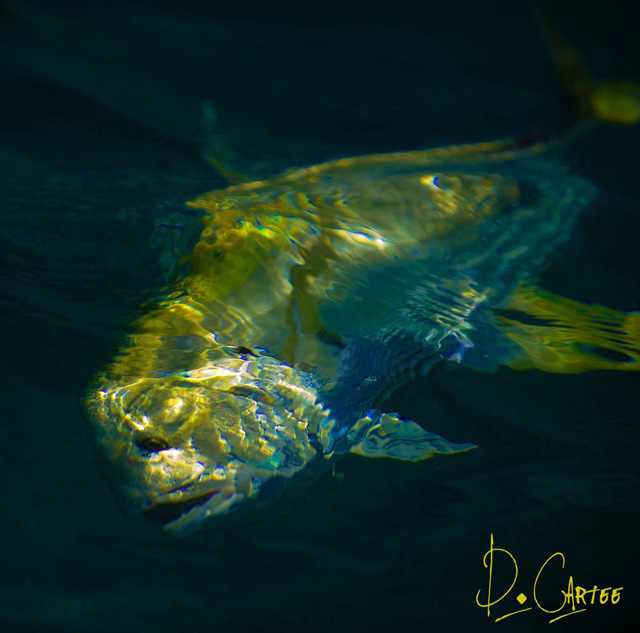Jack, crevalle:
Caranx hippos
[dropcap]I[/dropcap]f there’s a fish that you’d love to catch on a fly, it would be the Mike Tyson (in his heyday) of the oceans; Jack, crevalle. It is colloquially called: common jack, toro, cavally, cavalla and horse crevalle.
If you can find them in a feeding profile near the surface it will be game on

Photo by David Cartee.
Smaller jack, crevalle will congregate in inlets at tidal exchange times, preferring roiling water created by narrow restriction points. Bait fish get tumbled into it. Smaller jack, crevalle will enter fresh water marshes and fresh water rivers that go to tide. Here, you’ll witness jacks crashing baits against sea walls that are miles from saltwater. The former always seem to be up to about 2-to 5-pounds and the latter about 10-to 12-pounds. Of course, there are exceptions.
The ocean running version is always bigger at around 15- and 40-pounds with bigger renditions always possible. If you catch a 20-pound crevalle, all the animals in that group will be roughly the same size – they school.
The jack, crevalle is a skilled and voracious predator that feeds primarily on smaller fishes, which it often chases onto beaches. In open water, jacks will herd bait fish into a tight ball, then rush in from all sides. The crevalle jack also feeds on shrimp and other invertebrates and on garbage dumped from boats.
When fishing for rooster fish, jack cravelle and bluefish retrieve quickly without hesitating or stopping. You will not catch one of those fish pausing or stopping a retrieve. TIP: Put the fly rod between your legs and use both hands to make a smooth, fast retrieve.

Photo by David Cartee.
Description:
Crevalle jacks are deep-bodied, somewhat compressed fishes that grow more than 3-feet in length, and weigh over 55-pounds. Profile of the head is steep, with a short snout, and terminal mouth. The lower jaw projects beyond the upper. Body color is typically blue-black or green-blue dorsally, fading to silver along the sides. The fins and ventral surface are generally yellowish to dusky. A vertically elongate dark spot is set at the edge of the opercule. A second black area extends across the lower rays of the pectoral fins. There areno scales in the anterior ventral portion of the body. Two dorsal fins are present, with 9 spines in the first dorsal fin, followed by 19-21 soft rays in the second dorsal fin. The anal fin mirrors the second dorsal fin. Two fin spines are separated from the soft rays of the anal fin. The caudal peduncle is narrow and has a set of 25-42 bony scutes set at its midline. The caudal fin is forked.
Habitat:
Crevalle jacks are found from deeper offshore waters of the continental shelf to inshore coastal waters, where they are often found in estuaries and bays, and sometimes enter fresh water. Juveniles are common in estuaries where they utilize seagrass beds, as well as sand and mud substrates.
Range:
Crevalle jacks have a wide distribution in the world’s subtropical and temperate waters. In the eastern Atlantic, they are found from Portugal south through Angola. In the western Atlantic, they range from Nova Scotia south through Uruguay, including the Gulf of Mexico, Caribbean, and parts of the West Indies. In U.S. waters, they are also reported from the Pacific coast, where they are known to range from approximately San Diego, south to Chile.
Visit photographer David Cartee’s site.
[information]
Taxonomy and fishing tactics information provided by:
IGFA, Smithsonian Marine Station in Fort Pierce, Florida, and staff captains and fly anglers
[/information]


